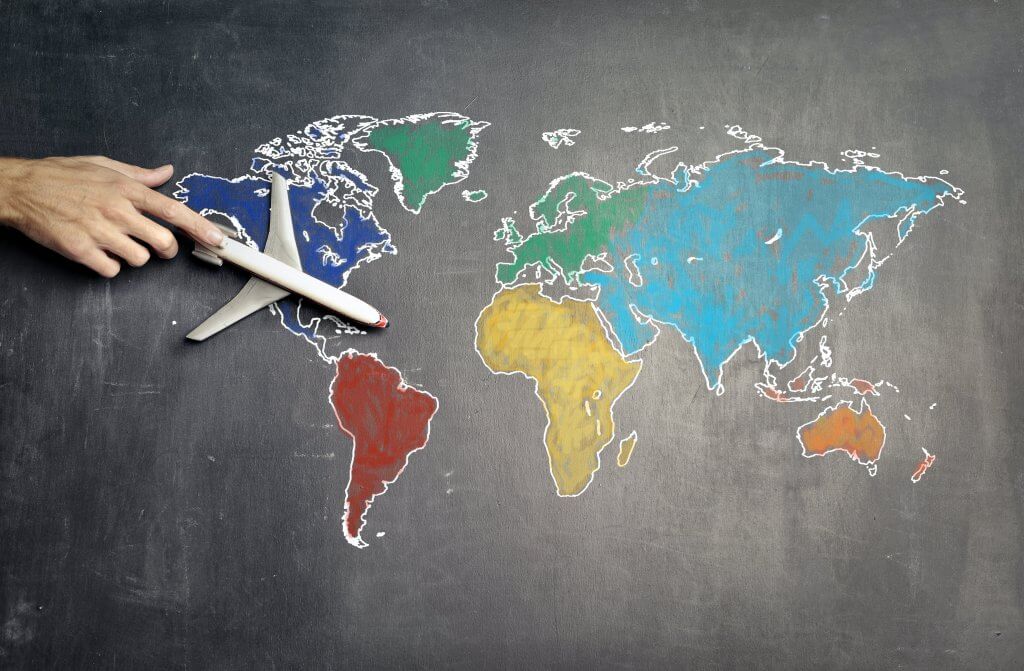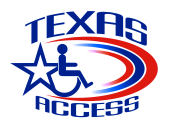Web or Digital Accessibility is the inclusive practice of ensuring everyone can access web content. That means all websites and applications are correctly designed, developed, and edited to be accessible to everyone, and can be operated by anyone. This ensures that all users have equal access to information and functionality. It also guarantees that websites are robustly built to work with a variety of assistive technology used by people with impairments.
Web accessibility caters to the needs of users with all disabilities that affect access to the web and web content. These include people with:
- Visual impairments – web content must be compatible with screen readers or support a braille alternative.
- Motor/mobility or dexterity impairments – web content must permit keyboard-only access and be compatible with speech recognition software.
- Hearing impairments – websites should consider a visual alternative such as subtitles or sign language.
- Cognitive and intellectual impairments – websites should provide accommodations for zooming and be compatible with screen magnification software.
You should take a look at the WCAG 2.1 checklist
International Web Accessibility Guideline – WCAG

The World Wide Consortium (W3C) is an international community that develops web standards and guidelines aimed at leading the web to its full potential. As part of its mission to make the web inclusive by promoting a high degree of usability for people with disabilities and ensuring websites look and work the same way for everyone, the W3C created the Web Accessibility Initiative (WAI) in 1997.
The WAI conceived the Accessibility Guidelines Working Group (AG WG) to enact guidelines and provide technical reports relating to web content accessibility. This group is responsible for publishing the Web Content Accessibility Guidelines (WCAG) in 1999.
WCAG is a specification of guidelines for making web content accessible to everyone, including people with disabilities. WCAG 1.0 was updated to WCAG 2.0 in 2008 as an extension and became an ISO standard, ISO/IEC 40500:2012 in October 2012.
In 2018, the AG Working Group published additional recommendations, birthing the WCAG 2.1 standards. WCAG 2.0 and WCAG 2.1 are both relevant and have referenceable technical standards in that they both cover recommendations for making Web content more accessible.
The WCAG 2.0/2.1 guidelines are organized under 4 principles:
- Perceivable – web content and user interface components must be presentable to users in ways they can perceive.
- Operable – users with disabilities must be able to navigate the user interface components.
- Understandable – web content and its operation should be easily readable and understandable by web users.
- Robust – web content must be interpretable by a wide variety of user agents, including assistive technologies.
The four guidelines have three levels of testable success criteria for conformance: A (the minimum conformance level), AA (medium conformance level), and AAA (the highest conformance level).
National Web Accessibility Laws
We do almost everything on the Internet today – chatting with family and friends, making reservations, working, shopping, relaxing, and learning. This is why it is essential to make websites more usable for people with disabilities so that everyone can access and use the content on the Internet.
Hence, it is important that countries across the world address digital accessibility issues through various human rights legislation (non-discrimination laws) and standard accessibility-specific laws. The Web Content Accessibility Guidelines (WCAG) are currently the international standards on web accessibility. Many countries have adopted and transposed them as a legal benchmark and reference for their national accessibility laws.
Let’s briefly look into web accessibility laws in a few countries.
The United States of America – (ADA and Section 508)
About a quarter of the American population (one in four people) have a form of disability ranging from cognitive to ambulatory and hearing disabilities. Thankfully, the US government has long-established fundamental laws to ensure equal rights and promote inclusiveness across all standards of life.
The web accessibility laws in the USA are:
- Section 508 of the US Rehabilitation Act of 1973
- The Americans with Disabilities Act of 1990 (ADA)
Section 508
The U.S. government through Section 508 of the US Rehabilitation Act of 1973, as refreshed on January 18, 2018, mandates federal agencies to ensure all electronic and information technology developed, procured, maintained, or used are accessible to persons with disabilities.
The Act has been harmonized with other guidelines, including the globally recognized standards- WCAG 2.0 Level AA.
Who must comply: All American federal agencies, including its vendors, contractors, and partners operating within and outside the U.S.
What it covers: Internet and intranet websites, telephones, smartphones, tablets, laptops, computers, multimedia, operating systems, digital documents, online training, etc.
ADA
The Americans with Disabilities Act of 1990 (ADA) is an American civil rights law that prohibits discrimination against individuals with disabilities and ensures equal rights and opportunities. It mandates state and local governments, organizations, and all public places to take steps necessary to communicate effectively with customers with any form of disability and remove any form of barriers to accessibility on their websites.
Who must comply: All American public services and products and services from private businesses.
What it covers: goods, services (transportation, education, employment opportunities, and public accommodations), communications, information, and government activities.
Penalty for non-compliance: Any organization that fails to have an ADA and Section 508-compliant website could be open to lawsuits, financial liabilities, and damage to brand reputation.
Learn more about America’s web accessibility laws here.
European Union – (EN 301 549 and European Accessibility Act)
The EU web accessibility laws and policies were born out of an ongoing effort to comprehensively address accessibility issues across the European Union. The European Union’s fundamental role in digital accessibility is to coordinate the legislative and policy activities of the individual member states and not mandate actions across all member states. The two laws that coordinate digital accessibility across the European Union are:
- EU Web Accessibility Directive or Web and Mobile Accessibility Directive (EN 301 549)
- European Accessibility Act
EN 301 549
The EU Web Accessibility Directive was first adopted on October 26, 2016. It mandates all public sectors of EU member states to make sure their websites and mobile applications are accessible to people with disabilities and meet common accessibility standards. The goal of the Directive is to ensure all Europeans actively participate in the digital economy.
The directive incorporates the EN 301 549 standard which sets out the accessibility requirements suitable for public procurement of ICT products and services in Europe. EN 301 549 standards gave legal force to the W3C’s WCAG guidelines. This simply means the EU officially required its member states to achieve WCAG 2.1 Level AA standards.
The EN 301 549 standard requires public bodies subject to the directive to:
- make the website and mobile app content accessible to everyone
- publish model accessibility statements on their websites
- provide a feedback mechanism for users to report inaccessible content
- provide a link to the enforcement procedure
Who must comply: all the EU member states.
What it covers: websites, mobile applications, and digital content of public administrations, hospitals, courts, and other public sector bodies including bodies governed by public law and financed via public contract.
Deadlines: The minimum timelines for compliance, monitoring, and enforcement, published by the European Commission are:
- September 23, 2019 – Websites published after September 23, 2018
- September 23, 2020 – Websites published before September 23, 2018
- June 23, 2021 – Mobile applications
Penalty for non-compliance: Failure to comply with the directive may result in fines or other legal penalties, negative publicity, and quite possibly consumer backlash.
The European Accessibility Act (EAA)
The European Accessibility Act came into effect in April 2019. It is a non-discrimination law that applies to public services and products from private businesses. The aim of the legislation is to eliminate the accessibility barriers in digital content, products, and services.
Who must comply: Public services and products and services from private businesses of all EU member states.
What it covers: Electronic devices, websites, mobile applications, electronic communication services, multimedia, operating systems, digital documents, e-commerce, etc.
Deadlines: EU Member states must incorporate the Act into their national laws by 28 June 2022 and must enforce them by 28 June 2025.
Learn more about the EU’s web accessibility laws here.
Canada – (ACA, AODA, AMA, and Nova Scotia Accessibility Act)
The Canadian Government and its many provinces have already-established web accessibility laws. This goes to show that the country actively has the needs of its 5.3 million citizens who live with some form of disability in mind. It recently moved from the Canadian Human Rights Act of 1977 which prohibits restriction and discrimination against people to accessibility-specific laws.
The Canadian Standard on Web Accessibility
This law covers departments, agencies, branches, and departmental corporations of the Government of Canada. The standard mandates them to make their web accessible to people with disabilities and meet the five WCAG 2.0 Level AA conformance requirements.
Who must comply: Canada’s federal public sector, Crown Corporations, and all federally regulated organizations including those in the private sector. It also mandates them to adopt the WCAG 2.0 AA standard.
Penalty for non-compliance: Failure to comply by 2021 could result in a fine of up to $250,000.
- The Accessible Canada Act received a Royal Assent on June 21, 2019. It ensures people with disabilities are not restricted from the procurement of goods and services, employment, transportation, and ICT, including digital content and the technologies used to access it.
Who must comply: Private or non-profit organizations with more than 50 employees and all public sector organizations and references WCAG 2.0 Level AA with the exception of live captions (1.2.4) and pre-recorded audio descriptions (1.2.5) for making their digital content accessible to people with disabilities.
Deadline: Failure to comply by January 1, 2021, could result in a fine of up to $100,000.
The Accessibility for Ontarians with Disabilities Act (AODA)
This is the first Canadian provincial accessibility law, enacted in 2005. AODA authorizes public, private, and non-profit organizations to follow established sets of accessibility standards to ensure goods, services, and ICT are equally accessible to the public.
The Accessibility for Manitobans Act (AMA)
The AMA became provincial accessibility legislation in 2013. AMA authorizes websites, mobile applications, and digital content of public and private sector organizations to be accessible to people with different forms of disabilities. It also adopts WCAG as a standard reference.
Nova Scotia Accessibility Act
This Act is the third Canadian provincial accessibility law, enacted in April 2017. It mandates public and private sector organizations to ensure goods, services, and ICT, including websites, and mobile applications are accessible to people with impairments. It references WCAG 2.0 AA requirements.
Penalty for non-compliance: Failure to comply could result in a fine of up to $250,000.
Learn more about web accessibility standards in Canada
The United Kingdom – (Equality Act of 2010)
Although the UK’s Equality Act of 2010 does not specify services, it prohibits discrimination against the 1 in 5 people in the UK with disabilities in the provision of goods, facilities, and services. However, the Code of Practice which was published to accompany the Act explicitly mentions websites as one of the “services to the public” that should be considered covered by the Act.
Public Sector Bodies (Websites and Mobile Applications) (No. 2) Accessibility Regulations 2018
The Public Sector Bodies (Websites and Mobile Applications) (No. 2) Accessibility Regulations 2018 requires public bodies to meet the international WCAG 2.1 AA accessibility standard and to publish an accessibility statement.
UK government on 28 May 2019 specified the internationalized standard BS ISO 30071-1 (supersedes BS 8878) for improving accessibility, promoting inclusive design, usability, and user experience in their web design so as to ensure accessibility for disabled and older people.
The BS ISO 30071-1 standard is consistent with the Equality Act 2010 and also gives reference to WCAG 2.0. The law mandates organizations to take steps necessary to communicate effectively with customers with any form of disability, provide reasonable adjustments for disabled people, and remove any form of barriers to accessibility on their websites. The same goes for UK’s new accessibility regulations which came into force for public sector bodies on 23 September 2018.
Who must comply: public sector bodies (central government, non-government and local government organizations and charities financed by public funding or provide services that are essential to the public or are aimed at disabled people.
It covers intranet and extranet websites or mobile apps.
Penalty Scheme: Any organization with an inaccessible website or mobile application could be open to lawsuits, financial liabilities, and damage to brand reputation.
Upcoming Deadline: It required public bodies and institutions subject to the regulation, to:
- make the website and mobile app content accessible to everyone
- publish a declaration on the accessibility of their websites or mobile applications
- new websites (published on or after 23 September 2018) must meet accessibility regulations and must have published an accessibility statement by 23 September 2019.
- existing websites that were published before 23 September 2018 must comply with the accessibility standards by 23 September 2020.
- new, existing, or outsourced mobile apps must comply with the accessibility regulations by 23 June 2021.
Equality Act of 2010
Who must comply: public services and products and services from private businesses.
It covers goods, facilities, and services (transportation and public accommodations), ICT, and government/business procurement activities.
Penalty Scheme: Any organization that fails to have an accessible website or mobile application could be open to lawsuits, financial liabilities, and damage to brand reputation.
Israel – (Equal Rights for People with Disabilities Act of 2013)
Over 20% of the Israeli population lives with some type of disability and the Government of Israel has enacted legislation to ensure internet websites and mobile applications are accessible to people with disabilities. The Equal Rights for People with Disabilities Act of 2013 represents one of these regulations and Regulation 35 of the Act mandates websites and applications that provide service and/or information to the public to provide accessibility to all websites and applications.
Who must comply: municipalities, businesses, government agencies, non-profit organizations, etc.
It covers goods, services (transportation, education, employment opportunities, and public accommodations), communications, information, and government activities.
Penalty Scheme: Any website or organization that fails to comply could face lawsuits, fines of up to NIS 50,000, and damage to brand reputation.
Israel’s non-discrimination law (Standard #5568) adopts WCAG 2.0 Level AA standards.
Japan – (JIS X 8341-3)
Japan is one of the leaders in seeking international standardization in the accessibility of technology. This was evident when the Japan Ministry of Postal and Telecommunication (MPT), gave a declaration about web accessibility guidelines in May of 1999. Established by the Japanese Standards Association (JSA) in June 2004, the Japanese web accessibility law for web content information accessibility (JIS X 8341-3 Standard) is based on ISO/IEC Guide 71 (JIS Z 8071). It sets the guidelines (or issues that must be considered in the planning, designing, development, production, maintenance, and operation of web content) to ensure web content and information are accessible to older persons and persons with disabilities.
Who must comply: JIS X 8341-3 Standard affects all ministries and the national public sector.
It covers Goods, services (transportation, education, employment opportunities, and public accommodations), communications, information, and government activities.
The JIS X 8341-3 standard does not adopt W3C’s WCAG guidelines but has similar success criteria as WCAG 2.0. However, it is not legally binding.
Germany – (Equal Opportunity Act and BITV 2.0)
The Government of Germany moves toward a barrier-free country for 9.4% of its population of individuals living with some form of disabilities with its two accessibility laws:
- Equal Opportunity Act (Disability Equality Act – BGG)
- Federal Ordinance on Barrier-Free Information Technology
Equal Opportunity Act
Who must comply: federal government, including the federal bodies, institutions, and foundations of public law including those owned or funded by the federal government, subordinate to the federal government, controlled or appointed by the Confederation
Disability Equality Act – BGG covers goods and services such as means of transport, technical and non-technical commodities, sources of information, and communication facilities.
Upcoming Deadline: It required public bodies and institutions subject to the directive, to:
- make the website and mobile app content accessible to everyone
- provide an alternative (such as sign language or other suitable communication aids)
- publish a declaration on the accessibility of their websites or mobile applications
- report on the status of accessibility every three years, for the first time on June 30, 2021.
The Equal Opportunity Act (Disability Equality Act – BGG) is a non-discrimination law that authorizes goods and services including means of transport, technical and non-technical commodities, sources of information, and communication facilities to be accessible to everyone, including people with disabilities.
BITV 2.0
Who must comply: all German public bodies and federal agencies and vendors, contractors, and partners of those agencies.
Disability Equality Act – BGG covers websites, mobile applications, intranets, extranets, electronically supported administrative processes, and graphical program interfaces – web-based and non-web-based applications.
The Federal Ordinance on Barrier-Free Information Technology (BITV) was first issued in 2002 and refreshed to BITV 2.0 on September 12, 2011. The Act authorizes the design of information and communication technology to be accessible to people with all types of disabilities. BITV 2.0 gave legal force to WCAG guidelines.
Learn more about BITV accessibility law here.
Australia (Disability Discrimination Act of 1992)
Who must comply: any individual or organization developing a website or other web resource in Australia or placing or maintaining a web resource on an Australian server. That is the public and private sectors.
Disability Equality Act – BGG covers web pages and other resources developed or maintained for purposes related to employment; education; and provision of services including professional services, banking, insurance or financial services, entertainment or recreation, telecommunications services, public transport services, or government services; sale or rental of real estate; sport; activities of voluntary associations; or administration of Commonwealth laws and programs.
Penalty Scheme: Any organization or agency that fails to have an accessible ICT could be open to lawsuits, incur monetary damages, and damage to brand reputation.
Over 4.4 million (about 1 in 5 people) in Australia live with some form of disability. The good thing is Australians can look forward to a more accessible future with the progressive Australian web accessibility laws. The Disability Discrimination Act of 1992 represents Australia’s main web accessibility law and it mandates all Australian government agencies and organizations who provide goods, facilities, or services to make their information accessible to all individuals, including access for people with disabilities. WCAG was referenced by the Australian government in 2009, therefore, all government and non-government websites had until the end of 2013 to comply with WCAG 2.0 AA. It will be important to note that Australia also adopted the AS EN 301 549 (identical adoption of EN 301 549 V1.1.2) and the procurement recommendation – Procurement Standard Guidance (2016) all of which also gave rights to WCAG 2.0.
Italy – (Stanca Act)
About 4.8 percent of the Italia population suffers from a form of disability and that number is bound to be increasing due to the high population of elderly people (18.7% of the population over 65 and 44.5% over 80 years old). To ensure information and services are accessible, without discrimination, by older persons and individuals with disabilities, the Italia digital accessibility law was established by the Digital Agency Italy – Agenzia per l’Italia Digitale (AgID) in June 2004 and in line with Article 3 of the Italian Constitution.
The Legge 9 gennaio 2004, n. 4 “Disposizioni per favorire l’accesso dei soggetti disabili agli strumenti informatici” (Legge Stanca) “Stanca Act” was named after the Minister for Innovation and Technologies, Lucio Stanca, the Minister for Innovation and Technologies at the time the act was passed. Stanca Act was published in the Italian Gazzetta Ufficiale on 17 January 2004 and became operational when it set out 22 technical requirements and different levels of computer hardware and software accessibility on 8 July 2005. An update of the act was published by Gazzetta Ufficiale on 16 September 2013. The Stanca Act also adopts the WCAG 2.0 Level AA success criteria and conformance criteria.
Who must comply: Stanca Act affects all Italian government and public sectors, and regional municipal companies, including the transport or telecom sector that has partial government ownership.
Stanca Act covers web-based assets, all IT-related concerns, communications, information, and government activities.
India – (RPD and Guidelines for Indian Government Websites)
The Government of India moves to remove barriers to accessibility for the 29 million (2.2%) of its population living with some form of disabilities with its two accessibility laws:
- Rights of Persons with Disabilities Act, 2016 (RPD)
- Guidelines for Indian Government Websites
Rights of Persons with Disabilities Act, 2016 (RPD)
Who must comply: public and private sectors.
Rights of Persons with Disabilities Act – RPD covers access to art and culture, healthcare, judicial, infrastructural reform, housing, institutions education, and employment.
Enacted by India’s Ministry of Social Justice and Empowerment in 2016 to give effect to the rights and obligations enshrined in the United Nations Convention on the Rights of Persons with Disabilities, India’s Rights of Persons with Disabilities Act is a non-discrimination law that requires all India sectors, and other aspects of daily life to provide equal opportunity, and accessibility to everyone, including people with disabilities.
Guidelines for Indian Government Websites
These were developed in 2009 by the Department of Administrative Reforms and Public Grievances. The Act authorizes the design of information and communication technology to be accessible to people with all types of disabilities. BITV 2.0 referenced the WCAG 2.0 Level A guidelines for conformance but has no legislative backing, instead, it provides a checklist of tips and tricks, tools, and resources that may be used to validate websites against the guidelines to ensure compliance.
Who must comply: all Indian public bodies and federal agencies.
It covers all web content.
France – (Law N° 2005-102 Article 47)
France is also one of the countries that were quick to inclusiveness of people with disabilities and equality of rights and opportunities with its Law № 2005-102 of February 11, 2005. Established by the Ministry of Social Affairs, Article 47 of the legislation mandates all public online communication services to be accessible to people with disabilities, regardless of the means of access. Law N° 2005-102 Article 47 also ruled that these services must draft and submit a multi-year plan to make their services sufficiently accessible with a penalty for non-compliance. The ministry developed the Order of 29 April 2015 on the general accessibility framework for public administrations as the General Accessibility Framework for Administrations (the RGAA) as the application of the law.
The Order (RGAA) represents the French government’s official guide to improving web accessibility for 17% of its population with disabilities and it features a methodological framework and a technical reference (verification method, tests, and checks) to enforce and verify compliance with both the WCAG 2.0 international standard and the WCAG 2.1 AA of EN 301 549 V2.1.2 (EU standard). Law No 2016-1321 was enacted as a Digital Governance law in 2016 to partially amend Article 47 of Law No 2005-102 with a number of additional matters such as open access, portability, data retrieval, etc. Law No 2016-1321 regulates the propagation of digital technology in the private and public sectors and is overseen by the State for Digital and Innovation (lead), Education, Economy, Social Affairs, Justice, Work, Interior, Housing, and Cultural Ministries.
Law N° 2005-102 Article 47
Who must comply: All French government agencies (including state, local, and regional authorities), and the public institutions that depend on it.
It covers all online public communication services.
Penalty Scheme: Any organization or agency that fails to have accessible online communication services could be open to penalties of up to €5000 (Euros).
Brazil – (L. 10.098)
The Law on Accessibility (L. 10.098)
The L. 10.098 enacted in 2000 in Brazil, requires accessibility in communication and barrier removal and expressly guarantees the right of persons with disabilities to information and communication.
Who must comply: In 2004, Decree 5.296 provided more detailed provisions for implementation and it requires all websites of government agencies to be accessible to persons with disabilities.
It covers all governmental websites— local, state, and federal. The decree requires them to be accessible within 12 months. It also requires them to place a symbol indicating web accessibility on those sites that are accessible to people with disabilities.
According to the International Disability Rights Monitor Project Americans 2004 Report, the Brazilian Technical Standards Association (ABNT) has created a working team for the development of a technical standard on accessibility to Internet content.
Spain
Spain has four national laws related to accessibility in general:
Law 34, June 11, 2002— Information Society and Electronic Commerce Services Act
Law 51, December 2, 2003— regarding equality of opportunities, non-discrimination, and universal accessibility for people with disabilities
Royal Decree 209, February 21, 2003— regarding registries and the telematic notifications
Law 59, December 19, 2003— regarding electronic signature
Law 34 includes an obligation to fulfill generally recognized accessibility criteria and does not mention W3C WCAG.
Who must comply: Law 34 specifies (also referenced as LSSICE) that all public administration websites and all websites financed by public funds must be accessible before December 31, 2005. Article 8 provides sanctions that include the removal of the data from the website.
Royal Decree 209 discusses the W3C WCAG guidelines for obtaining Priority Level AA.
You can continue to check this page often for regular updates on international and country-specific web accessibility regulations.







